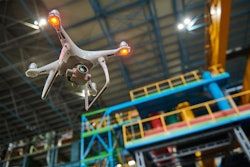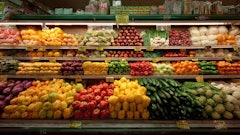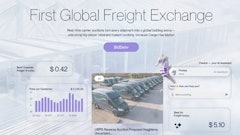
It’s fair to say the grocery market was slow to digital transformation. As an older industry, there were too many legacy systems in place and too few start-ups to push change. Over the last few years, though, we’ve seen some really innovative digital technologies enter the supermarket space, which has brought with it a wealth of artificial intelligence (AI) and machine learning (ML) tools.
AI is impacting everything in the grocery store, from pricing enhancements to product placements and online order fulfillment. For an industry that was slow to adopt digital anything, nearly every square meter in the supermarket is fair game for enhancements from AI and ML systems.
One of the most important AI innovations involves using the technology to prevent spoilage and food waste. Globally, food waste is a huge problem. The Food and Agriculture Organization of the United Nations estimates that 1.3 billion tons of food is wasted every year, nearly one-third of all food produced.
In Europe, an estimated 20% of all food produced each year is wasted. In the United States, even more groceries go to waste. According to Quest, $43 billion worth of food in the United States goes from store shelves directly to the trash every year.
As a result, the United Nations published Sustainable Development Goal (SDG) 12.3, looking to halve per capita food waste at the retail and consumer level by 2030. The EU and its member states are committed to meeting this goal, and the United States is one of a number of governments measuring food waste within its borders.
For supermarkets, AI promises to play an important role toward enabling them to meet their target waste reduction levels.
A marriage of technologies to prevent food waste
There are several technologies coming together that will be vital in the fight against food waste in supermarkets. Dynamic pricing, electronic shelf labels and computer vision work in tandem to create a retail environment designed to move products from the shelves before they reach their “sell by” date.
Computer vision acts as the eyes of the operation. The cameras built into the system watch inventory, noting when shelves are empty. While the primary use of the system is to alert team members to stock shelves, it can be used to alert inventory systems when products are reaching their end of life.
The inventory system is connected to the dynamic pricing engine. This AI-based tool functions as the brains, and uses a number of different criteria, including inventory considerations, consumer behavior and competitor pricing to recommend the ideal price point to make a sale.
In a food waste use case, the inventory management system alerts that dynamic pricing engine that products are nearing their end of shelf life. The dynamic pricing engine assesses the situation, and typically recommends adjusting prices downward to drive sales of older products. Using ML tools, the system quickly learns the right balance between price and sales, while also considering the grocer’s expenses.
Electronic shelf labels (ESL) perform as the mouth of this mini ecosystem, communicating changing prices to consumers as they browse past produce and expiring products. These digital price tags can easily connect to the dynamic pricing engine, either through Wi-Fi or any other connectivity technology and present customers with up-to-date pricing.
This combination of systems is called next-gen pricing. The dynamic pricing engine can always find the ideal price to move products out of the store, but without the computer vision, it lacks real-time inventory insight. Prior to introducing ESLs into the picture, supermarkets attempting to adjust prices based on inventory levels, expiration dates and consumer demand would need to manually adjust price tags, something that doesn’t scale well in a supermarket that may have thousands of products in the dairy, produce, deli, meat counter and bakery sections, all with limited shelf life.
ESL enables the dynamic pricing engine to work in a physical retailer environment, enabling the dynamic pricing engine to communicate price changes to shoppers.
Helping consumers and supermarkets alike
The beauty of using next-gen pricing to move near end-of-life products before they spoil is beneficial to both the grocery store and the consumer. Rather than simply throw out unsellable products for a total loss, grocers have the opportunity to recover some of the value in their inventory.
The dynamic pricing engine uses AI tools to find the balance price point where consumers are willing to pay for products that need to be consumed within the next few days. This enables grocery stores to recover as much of their investment as possible, rather than just use a gut feeling to adjust prices.
Consumers, meanwhile, have the opportunity to save money by purchasing products at a discount. Consumers who prefer fresher products always have the opportunity to buy longer-lasting products at a higher price, but those who are price sensitive can buy expiring products at a more affordable price.


















